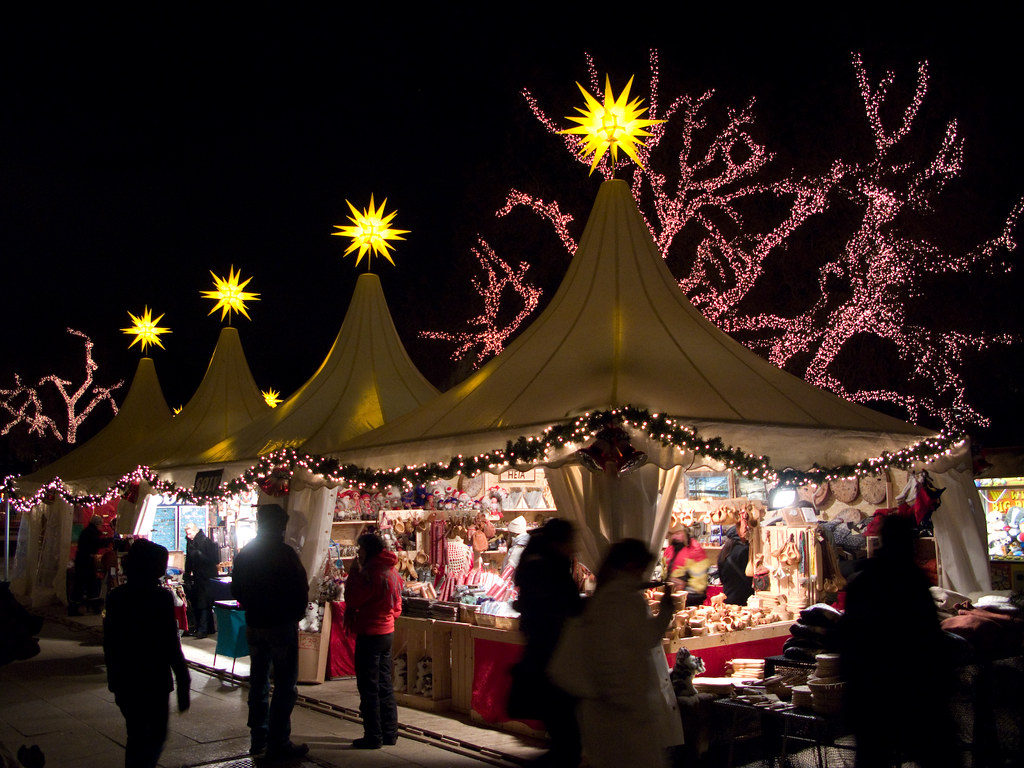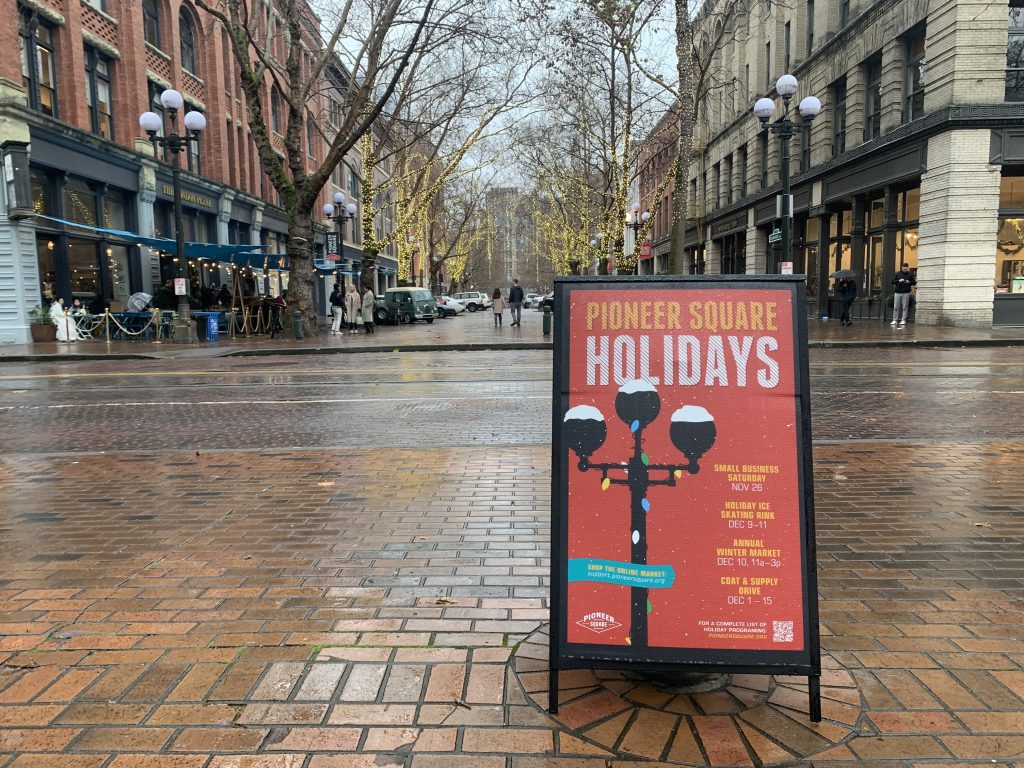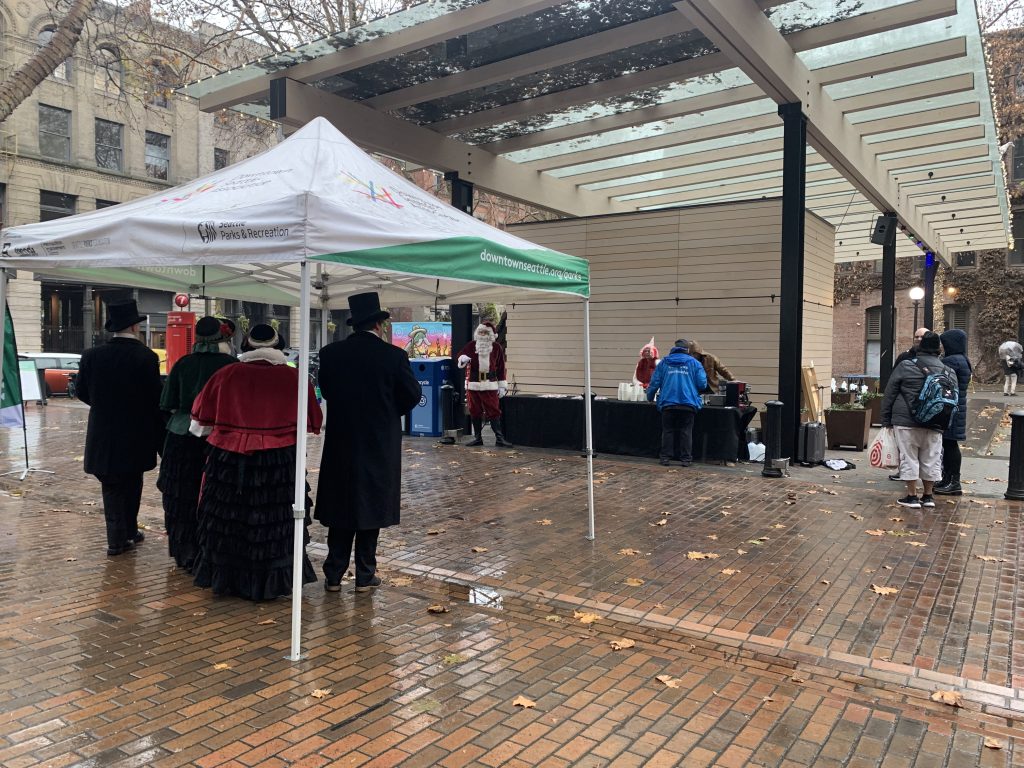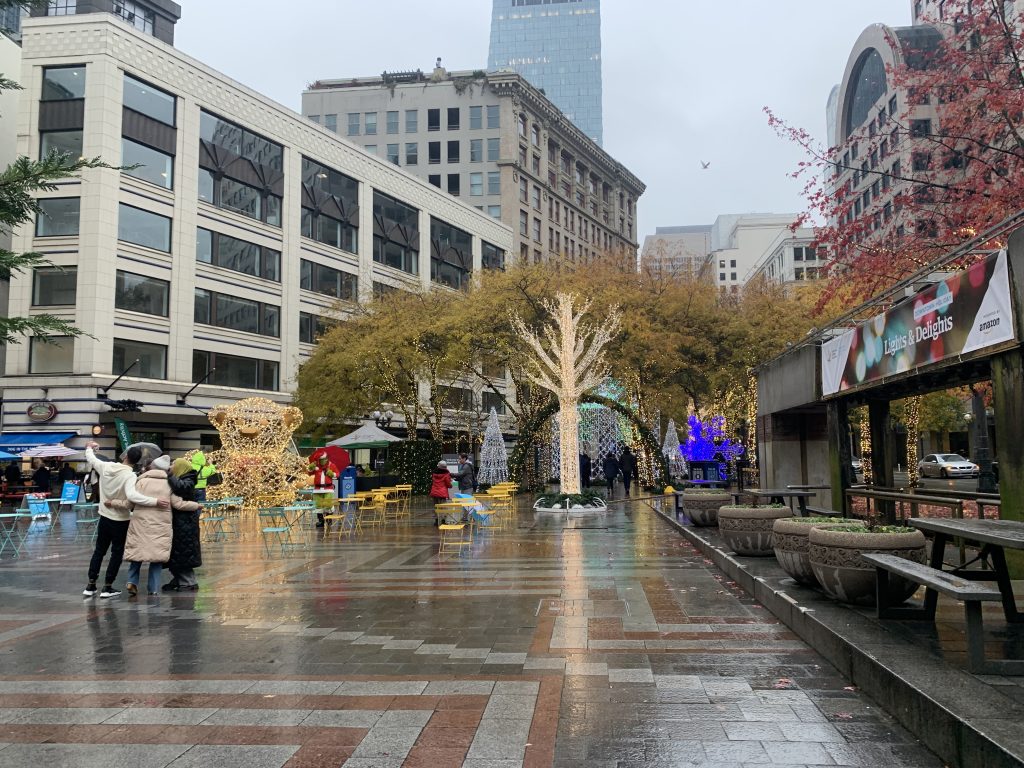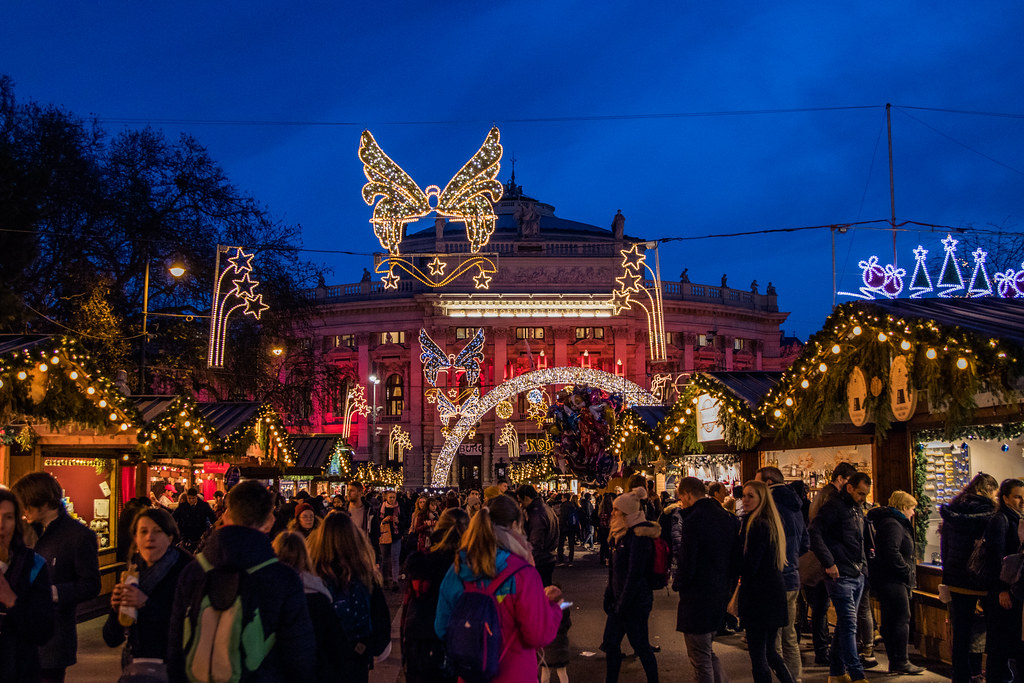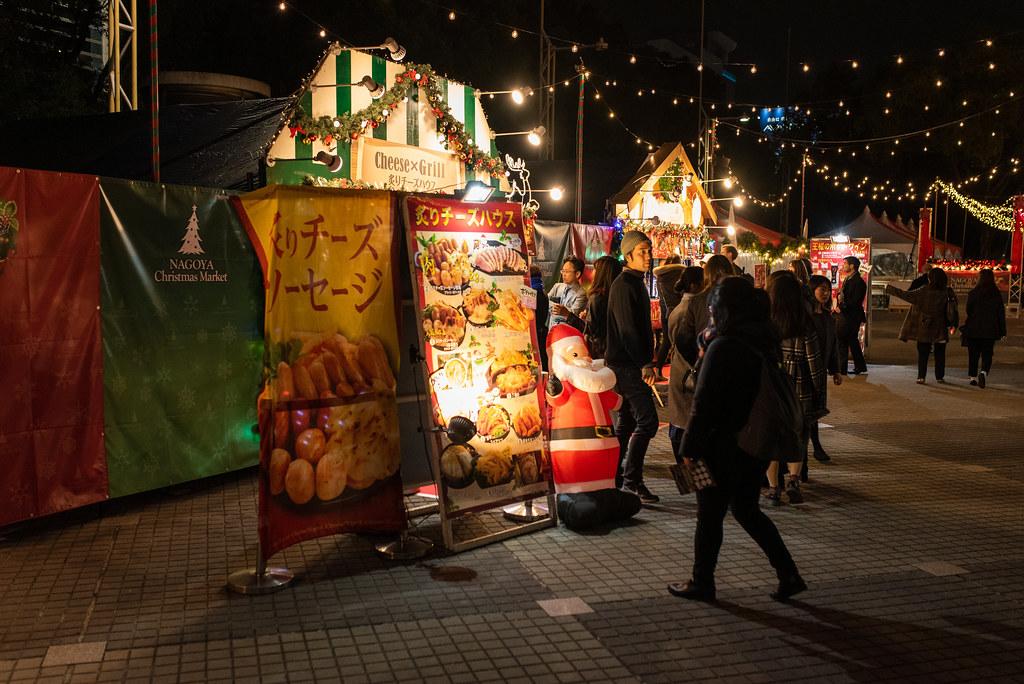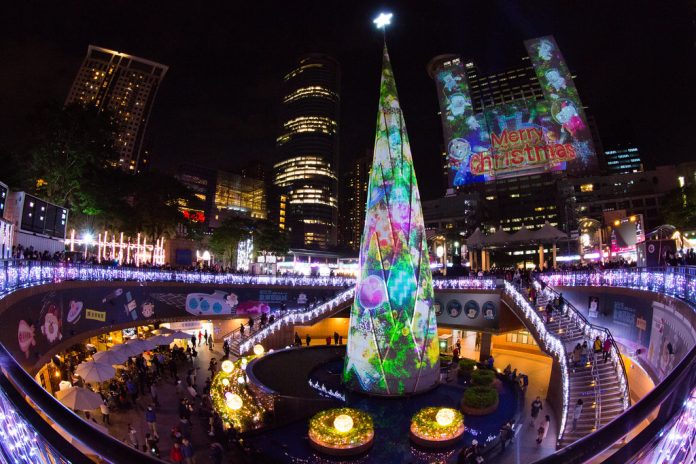
Seattle is a city of markets. There’s the world famous Pike Place Market, of course, and our extensive assortment of weekly and seasonal farmer’s markets is the envy of many larger metropoles. Yet despite being regularly ranked among the most hygge, or coziest, American cities, Seattle lacks what is considered a key ingredient to creating hygge in much of the rest of the world — a truly festive outdoor Christmas market.
With its vibrant maker scene and pedestrian-friendly public spaces, Seattle could host a Christmas market to rival the world’s best. Seattleites should not have to travel to the Northern European styled hamlets of Leavenworth or Poulsbo to soak in holiday ambiance.
Yes, there is already a smattering of winter and holiday markets that appear for a few days here and there during the holiday season in Seattle. None of these markets, however, embody the great placemaking ethos of a real Christmas market where festive ambiance transforms streets, plazas, and even transit stations into the kind of winter wonderland beloved by children (and adults too) during November and December.
Consider for a moment the heavy hitters in Seattle’s Christmas market scene. Julefest, held by the National Nordic Heritage Museum in Ballard, may welcome throngs of visitors each year, but it is held on the museum grounds away from the neighborhood’s busy center for one weekend during November. And with its austere white tarped stalls, the atmosphere is indistinguishable from other outdoor events.
Just as utilitarian are the events sponsored by Urban Craft Uprising. Even their South Lake Union Holiday Market offers little in the way of seasonal ambiance. No different is the annual Winter Solstice Night Market held in Hangar 30 at Magnuson Park, where visitors pay $15 to $35 to crowd together in a massive warehouse under fluorescent lights.
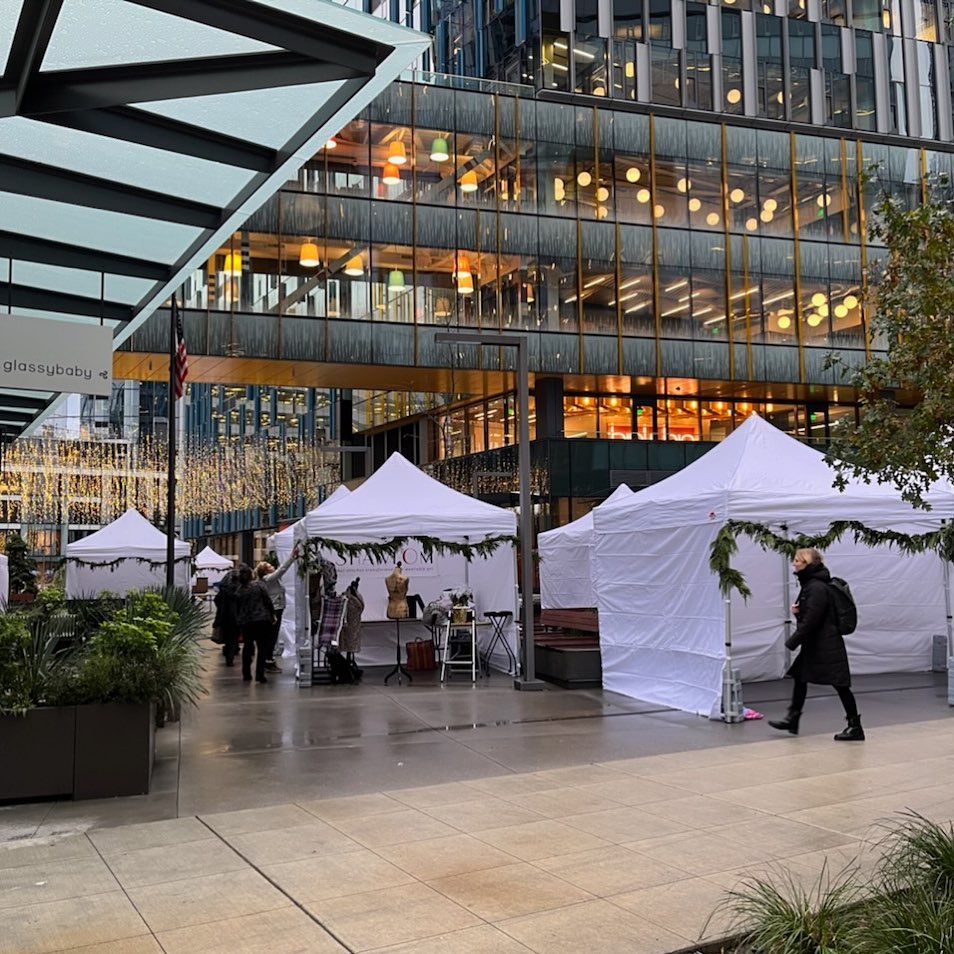
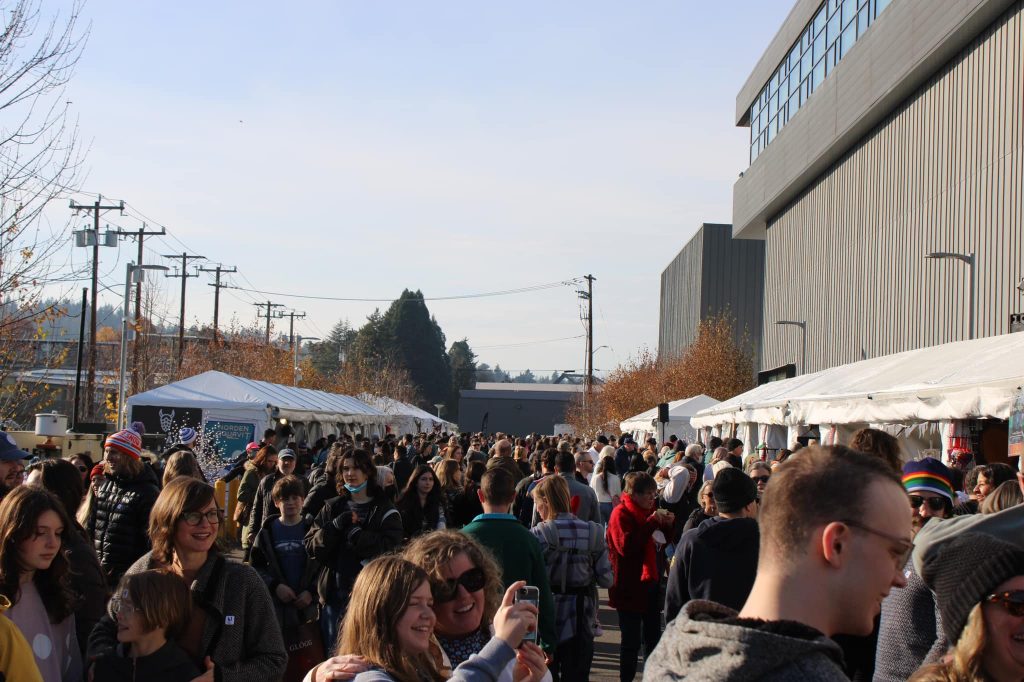
Pike Place Market does take on a special glow during the holidays, but by nature of existing year round, it loses some of the seasonal magic of a market that pops up solely during the holidays.
All of these events offer the opportunity to purchase goods from local vendors, which is laudable. But these markets’ weaknesses also make them fall short in terms of the support they could offer to local artisans and businesses. By not creating a rich holiday experience that visitors can return to multiple times over the holiday season, these markets become places visitors briefly hurry through and quickly forget.
This was clearly the case on a recent Saturday afternoon in Pioneer Square where carolers in costume sang in a nearly vacant Occidental Square while Santa Claus tried to convince the few passersby to take free cookies, hot cocoa, and egg nog. Like Pioneer Square, holiday lights also decorate Westlake Plaza in the Downtown business district. But while the lights might dazzle for a short while, they do little to convince people to stay.
Meanwhile in the world’s great Christmas markets, people can enjoy simply being there without spending a cent. Yet many often do end up shopping for gifts or buying foods and beverages, and the economic impact of these markets is considerable. In Germany, Christmas market closures resulting from the pandemic in 2020 were estimated to result in about €3 billion euros in lost revenue for the country.
It’s true that Christmas markets in much of Europe have as much to do with tradition as commerce. The first Christkindlemarkt is thought to have been held in 1384 in Bautzen, Germany. Records, however, of December markets dating back even a century earlier exist throughout the region, one direct descendent of these December markets is Vienna’s Christmas market, making it one of the oldest continually operating winter markets in the world.
Today visitors to Vienna in November and December can enjoy not one, but 12 main Christmas markets scattered among plazas and streets across the city. There are also a handful of shorter duration markets focused on specific themes like recreating a Medieval Advent market or selling gourmet food and drinks. About three million people are estimated to visit Vienna’s Christmas markets annually.
But while they are often associated with Europe, festive Christmas markets can be found in all corners of the globe, opening the tradition to new interpretations. Tokyo is known to have some of the most appealing Christmas markets in the world. Meanwhile in the U.S., some of the best known Christmas markets are held in cities with much lower hygge factors than Seattle like San Diego and Savannah.
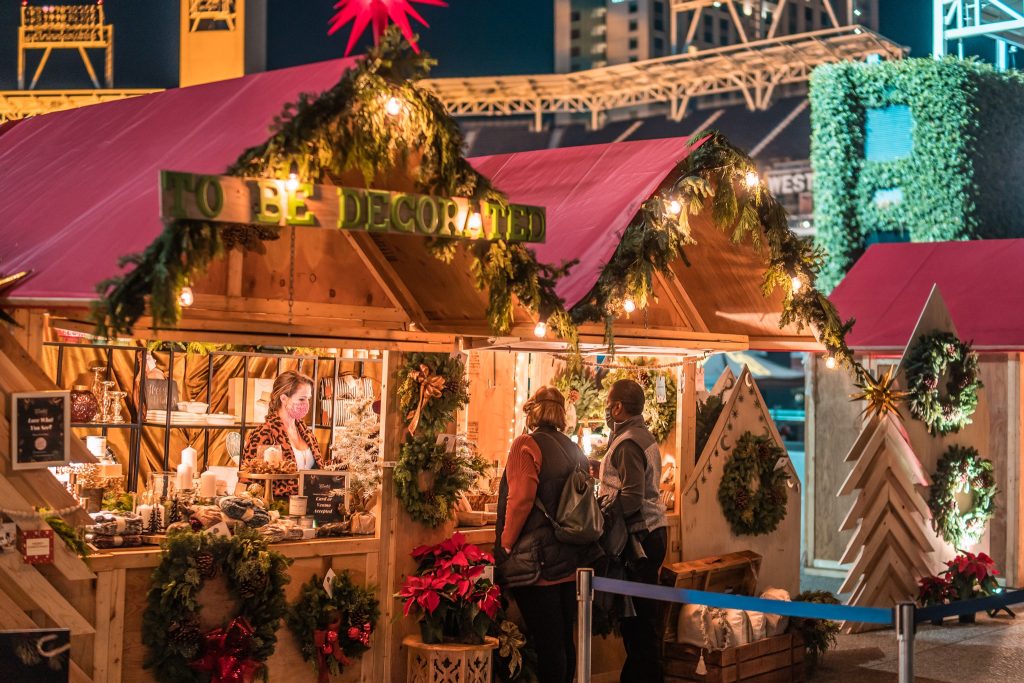
There has been a lot of discussion over how to make Downtown Seattle a safer and more dynamic place to be in the wake of the Covid pandemic. An outdoor Christmas or holiday market throughout most of November and December would be a smart way to do so. Locations like Occidental Park in Pioneer Square, Westlake Plaza in the Downtown core, or the Capitol Hill Station Plaza, would all be natural fits, but there are other locations across the city that would be suitable as well.
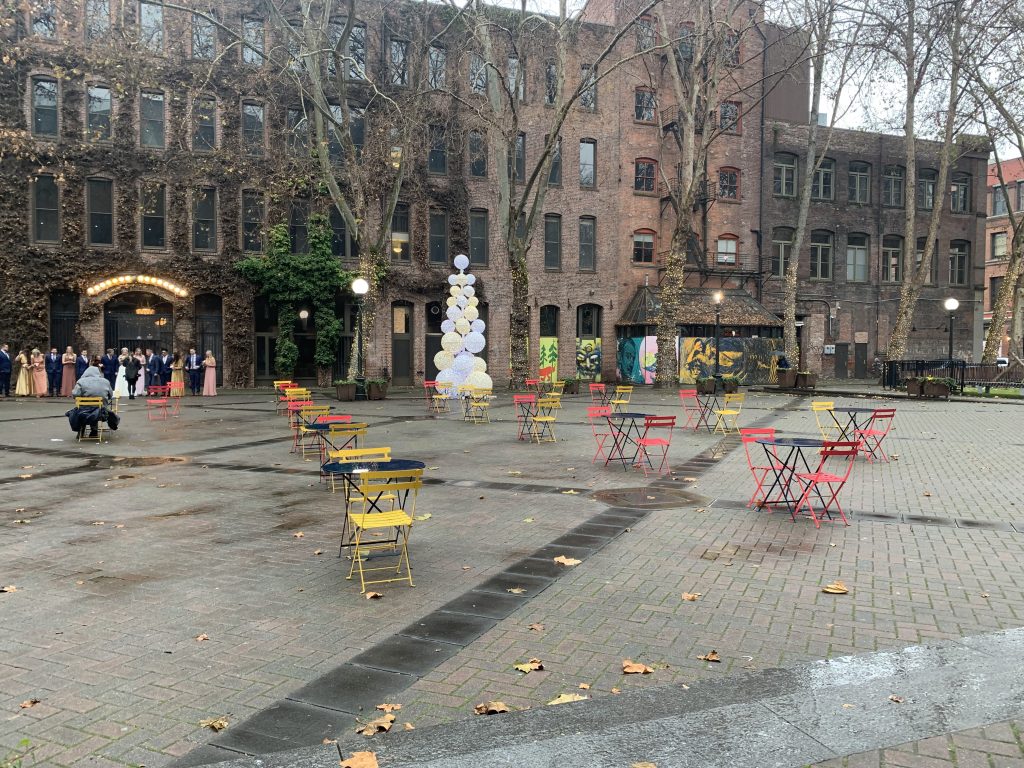
And why should Seattle be limited to a single outdoor Christmas market? Seattle not only deserves this kind of family friendly, people-centered addition to its winter streetscape, it could pioneer a new kind of Pacific Northwest outdoor holiday market aesthetic. After all, who says raincoats, café mochas, dim sum, and visions of dancing Sasquatches can’t become emblematic of winter holiday cheer?
Natalie Bicknell Argerious (she/her) is a reporter and podcast host at The Urbanist. She previously served as managing editor. A passionate urban explorer since childhood, she loves learning how to make cities more inclusive, vibrant, and environmentally resilient. You can often find her wandering around Seattle's Central District and Capitol Hill with her dogs and cat. Email her at natalie [at] theurbanist [dot] org.


